Behind every piece of art is a story. And if you’re an art fanatic, you know Jean-Michel Basquiat’s works speak volumes. I recently had the chance to attend the Behind the Canvas Series 1: Jean-Michel Basquiat exhibition – and in a nutshell, it was like peeling back pages of history!
I simply have to revisit this journey, so let me take you along. Stay close and don’t blink – lest you get lost behind the canvas!
Who is Jean-Michel Basquiat?
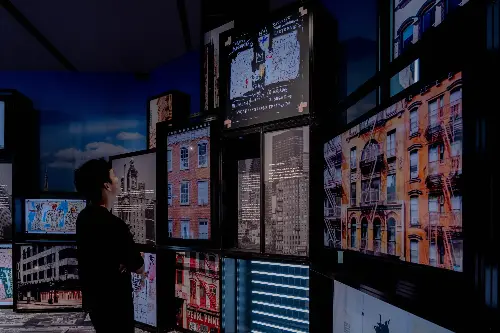
Jean-Michel Basquiat is often regarded as one of the most influential artists of the 20th century, though his career was as brief as it was successful. Rising to prominence in the streets of 1980s New York City, Basquiat’s work immediately caught the eyes of art lovers and critics, and he quickly transitioned from being a graffiti artist in the Lower East Side to a celebrated painter.
Despite his incredible journey being tragically cut short by a drug overdose at the age of 27, his impact is still felt today. Through his experimental works, full of symbols and words, he explored various socio-political themes, tapping into his own struggles as a black artist.
But Basquiat never gave a clear blueprint for understanding his art. And as I wandered through this exhibition, I felt this sense of unpredictability and curiosity as I tried to understand the various meanings and emotions in his works.
Basquiat The Notebooks
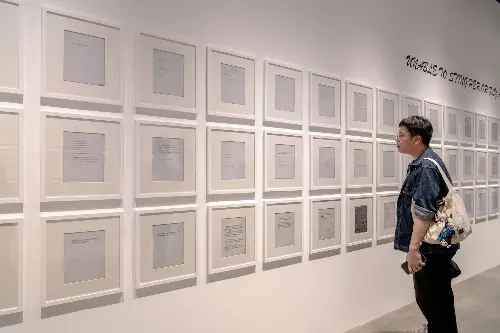
Right away, I was viscerally transported into Basquiat’s mind. This section was a look into his creative process displayed across 160 original pages – and they weren’t just doodle pads. Oh no, they were windows to Basquiat’s most intimate musings, framed unassumingly. I found myself in a quiet, sacred space where Basquiat mapped out his cryptic but poetic visions.
Like his street art and studio works, these notebooks were their own practice. Famed art critic Rene Ricard described them as Basquiat’s process of purging syntax and structure to arrive at the irreducible essence of his work. And I could definitely see that! Every note was intentional, every scrawl a moment of clarity as he tried to articulate abstract ideas into something tangible.
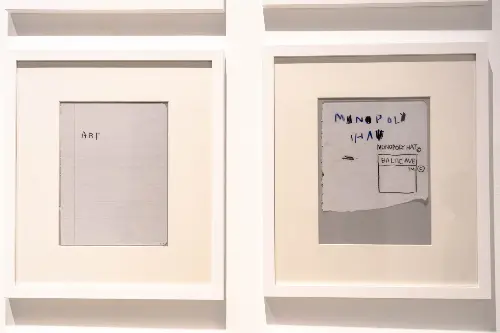
One note that caught my eye – and had me giggling – was the phrase “crocodile as pirate.” At first, I pictured a cartoonish crocodile donning a pirate hat and wielding a hook. But looking back, I’ve come to a realisation. Could this quirky note have inspired his 1984 collaboration with Andy Warhol, Crocodile? Crocodiles, have appeared more than once amongst Basquiat’s works, a symbol of strength and wisdom in African culture. Pirates, in turn, carry ideas of plundering and rebellion.
Together, they reflect the predatory nature of capitalism and its plundering of resources for profit, like a pirate ruthlessly looting treasure. Suddenly, that one playful phrase seems so much more profound, doesn’t it?
This section was a reminder that there is art even during the journey of thought and creation. I watched Basquiat think out loud, and it made me reflect on how we distill our own ideas – how a humble scribble can lead to something extraordinary.
The Den
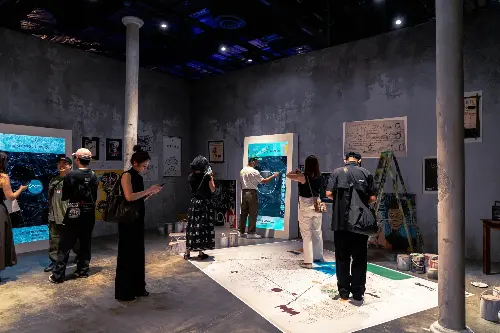
The Den was a glimpse into Basquiat’s world, carrying a scruffy charm. This interactive space was a recreation of his studio – the nerve centre of Basquiat’s unrestrained creativity. Here, I had the chance to step into his shoes and experiment with digital art on the large screens. Visitors could save their creations directly to their phones for a personalised keepsake!
From working in an art gallery’s basement to his iconic Great Jones Street studio, Basquiat’s workspaces were as dynamic as his art. The same gritty essence that runs through his works was mirrored in this space, and I couldn’t help but wonder how many seeds were planted here but never given time to bloom due to his short life. Through this immersive experience, The Den carried a flicker of Basquiat’s spirit, left behind to inspire us.
The Basquiat Expression Room
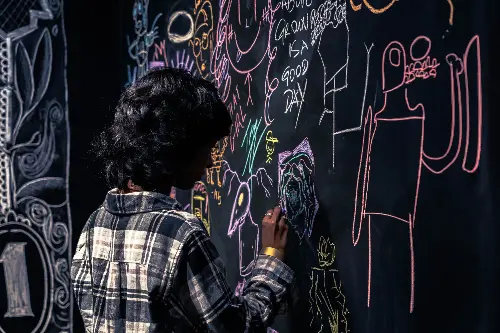
The Basquiat Expression Room was a natural extension of the influence Basquiat left behind – sparking creativity in others. The walls and surfaces were alive with possibilities, and the materials called out to me. It was a space where anyone could create something personal and leave their mark behind, much like he did.
It was endearing watching other visitors work on the walls as well – especially this young boy who wouldn’t leave his little corner. He was so focused, pinching his face in concentration as he scratched his chalk across furiously. That’s what it’s all about – art is for everyone, isn’t it?
The Head–The Mind
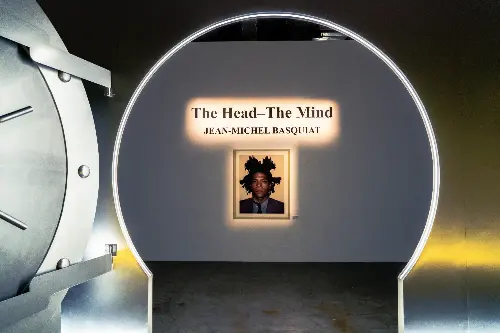
Needless to say, The Head–The Mind was, quite literally, a coup d’œil into Basquiat’s inner self – his thoughts taking shape in expressions of the human psyche. For Basquiat, the mind was his muse, a subject of fascination. And what better way to explore that than through the head, the very vessel of thought? It’s the perfect metaphor for cognition and identity.
Basquiat’s fascination with anatomy was quite personal, tracing back to the young age of seven when he was recovering in the hospital after being hit by a car. His mother gave him a copy of Gray’s Anatomy, and he began poring over its depictions of the human body. With natural progression, this early exposure found its way into his art.
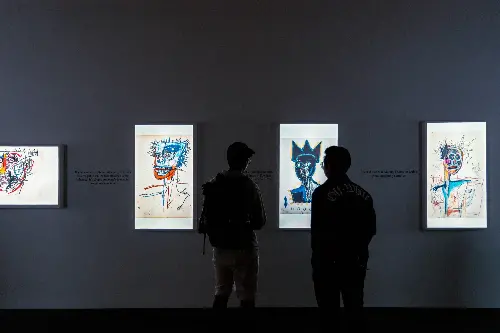
In this gallery, every swish, smudge and splatter was a reflection of Basquiat’s frenetic mind. The works displayed here were born from his upbringing, heritage, the words he experimented with, and the intellectual pursuits that fuelled his creativity. I found myself pausing to read the accompanying quotes – little snippets of Basquiat’s philosophy.
I remember a simple yet powerful mantra that stood out to me was “Labels mean nothing.” And Basquiat stayed true to this, breaking down walls and pushing boundaries of expression for his art to transcend labels and become something novel yet personal.
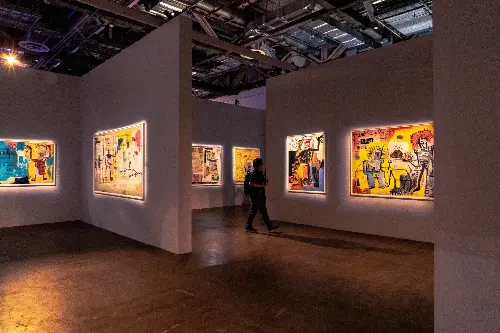
Since we’re on the topic of quotes, words are just as important as the visuals within Basquiat’s works – with repetition, broken words, and crossed-out phrases. And they weren’t random. His subjects were wide-ranging, referencing topics like race and oppression.
He would often scribble words over and over again – and those crossed-out phrases? “I cross out words so you will see them more,” he said. His works are like riddles, encouraging the viewer to question and reinterpret, to see the words anew every time they look at them.
This showcase was a reminder of what the world lost with Basquiat’s untimely passing – and that life is too short not to embrace the beautiful chaos of your own thoughts and see where they might take you.
Come See it for Yourself!
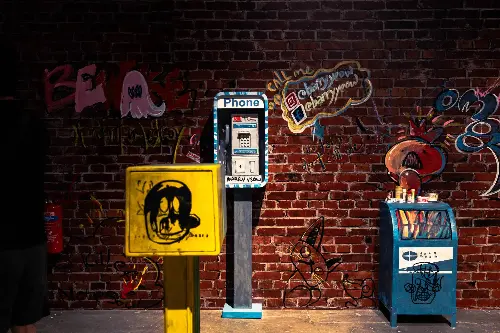
Phew, let me catch my breath. To say the least, this exhibition is a wonderful tribute to Basquiat’s distinct way of confronting, questioning, and inspiring – and what a rich slice of his life it was! Don’t miss this chance to experience stepping into his world firsthand.
🗓Date: 16 December 2024 – 6 March 2025
📍Location: Sands Expo and Convention Centre, Level B2, Exhibition Hall D, 10 Bayfront Ave, Singapore 018956
💲Price: Starting at S$43
⏰Opening hours: Daily from 10am to 8pm (Last admission at 7pm)
Run, don’t walk, to snag your tickets! For more details, hop over to this exhibition’s page. The world of art awaits you with open arms!
Photos By Izzah Ilyana of the DANAMIC Team.
